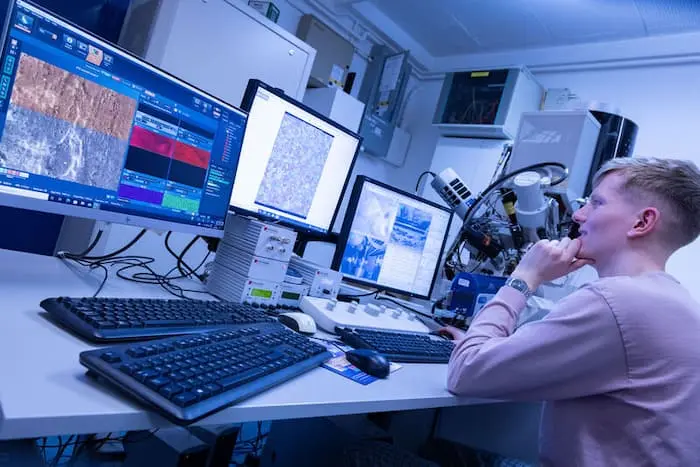The University of Bristol, Xtravirt and Omnissa success story
The University of Bristol, working alongside Xtravirt and Omnissa, set out to transform its digital workspace and redefine what was possible.
In this blog we’ll share a little of what the role of Xtravirt looks like as a strategic partner to the University of Bristol and how we work effectively together – as one team – to undertake mission-critical journeys like this successfully. It all starts by understanding the what and the why.
Starting with the core strategy
As a core component of its Digital Strategy, the University of Bristol set out an ambition that wasn’t just based on the deployment of technology, but to redefine how teaching and research could be delivered and consumed. The goal was clear: to create a University experience that was truly boundaryless. One that put equity, flexibility and academic excellence on equal footing.

Achieving this goal meant moving away from fragmented legacy systems and solutions and focussing on a single, unified environment that could scale with demand and enable secure, high-performance access to computing resources for every student and researcher. The challenge was not just technical. It was strategic, cultural and deeply human. As part of our long-standing partnership with the University, Xtravirt was asked to help.
Understanding the ambition
At the heart of the University’s digital strategy is a belief that every student, no matter their background, location or device, should have the same access to learning. Take, for example, engineering students whose coursework requires the running of processing intensive workloads. Is it fair that students owning expensive, high-spec laptops should enjoy more opportunity to power through processing intensive coursework at a time and location of their choice, compared to their counterparts who must rely on older, lower spec hardware or access to shared desktops in the University’s labs?

With a compelling business objective to provide all students with equal access to the services and capabilities they need to study, the project was started with a comprehensive discovery phase in partnership with Xtravirt. This identified significant opportunities to enhance user experience, simplify access, increase available capacity and, in parallel, increase the flexibility of lab environments.
The University sought a virtual desktop solution that would supplement and unify existing desktop and infrastructure services. Working in partnership with Xtravirt, they were able to independently validate that this program of desktop transformation would put them in greater control of spend, security, governance and performance.
Designing from the ground up, with users at the centre
As a strategic sponsor of this project, Keith Woolley, the University’s CDIO. engaged leadership across the academic and research community, building a shared understanding of the opportunity and goals, providing a perfect basis for initial engagement.
The University was adamant that the technology would not lead the outcome. Xtravirt’s Strategy & Advisory team worked with the University’s internal IT team undertaking a thorough discovery phase exploring more than 20 potential use cases. Interviews and workshops with teaching leads, academics and tutors built common understanding of course delivery, the student and academic work friction points, and opportunities to increase efficiencies.
These workshops gave a glimpse of the potential impact, bringing contributors to the table and creating new supporters and vocal sponsors of the program. As well as confirming previously identified opportunities to enhance the student experience and optimise lab environments, the workshops also highlighted some new areas of need which could be addressed. These included reducing the amount of equipment required by researchers when working remotely in the field and the seamless delivery of learning to international students.
Working together, we helped the University prioritise where early wins could be made, particularly the areas where change would have immediate impact and generate momentum for broader adoption.
Phased delivery, lasting impact
With the opportunity and business case secured, Omnissa Horizon® was selected to deliver virtual desktops and applications across hybrid cloud environments and maximise the users’ digital experience. From day one, the rollout of the initial use cases was achieved through joint delivery. Following the delivery phase, Xtravirt continued to work closely with the University teams to ensure a smooth transition and successful adoption of the new solution. This included providing early-life support to optimise platform performance, swiftly address any initial issues, and incorporate early user feedback into ongoing improvements.
GPU capacity added to the University’s private cloud extended the power of the Virtual Desktop Infrastructure (VDI) enabling performant and equitable access to complex applications, without being limited by the user’s device. Central management, image control and governed maintenance quickly evidenced the needed efficiencies. At a launch demonstration, the University lead Project Manager was cheered – a rare occurrence in any IT organisation.

Digital equity and expanding demand
With GPU enabled desktops, students have more equitable access to high power IT capability than ever before. Some of the earliest adopters of the new capability were engineering students, some of whom have reduced the work time spent on complex rendering by 75% since the move to Omnissa Horizon. The ability to deliver services securely on a student device in a consistent and controlled way highlighted new business case opportunities. Awareness quickly spread, driving demand from new departments with new ideas. Witnessing this level of excitement about the adoption of a new technology and seeing the human impact it is having for all those working at and with the University make this project one of Xtravirt’s most rewarding to date.
A model for others to follow
It can be all too easy to generalise and think of the public sector as slow to move but this project shows the opposite. The University reinvents itself every year with new courses, new research grants, new demands and, of course, new students. Its ability to adapt is core to its mission. That’s why a digital foundation that engages the users and delivers tangible services has such an impact.
This isn’t a three-year roadmap with a static destination. It’s an evolving platform, built to support change, not resist it. New demands will continue to flow as the academic and research communities identify more opportunities to collaborate, and new courses will need to be delivered that have not yet been conceived – the platform is ready because it was built with the future in mind.

Final thoughts
At Xtravirt, we often engage with customers to find that while they have cutting edge technology installed, it holds no alignment to the business strategy and goals. The University of Bristol project is a reminder that the best strategies aren’t driven by cool software or procurement cycles. They’re led by people who clearly understand their ambition and goals, have engaged their stakeholders on the journey and are ready to build from the inside out. That’s what makes this partnership special. And why, at Xtravirt, we’re proud to have played a part.
Want to see how Xtravirt can help your organisation modernise infrastructure and scale smarter? Get in touch for a personalised consultation.






